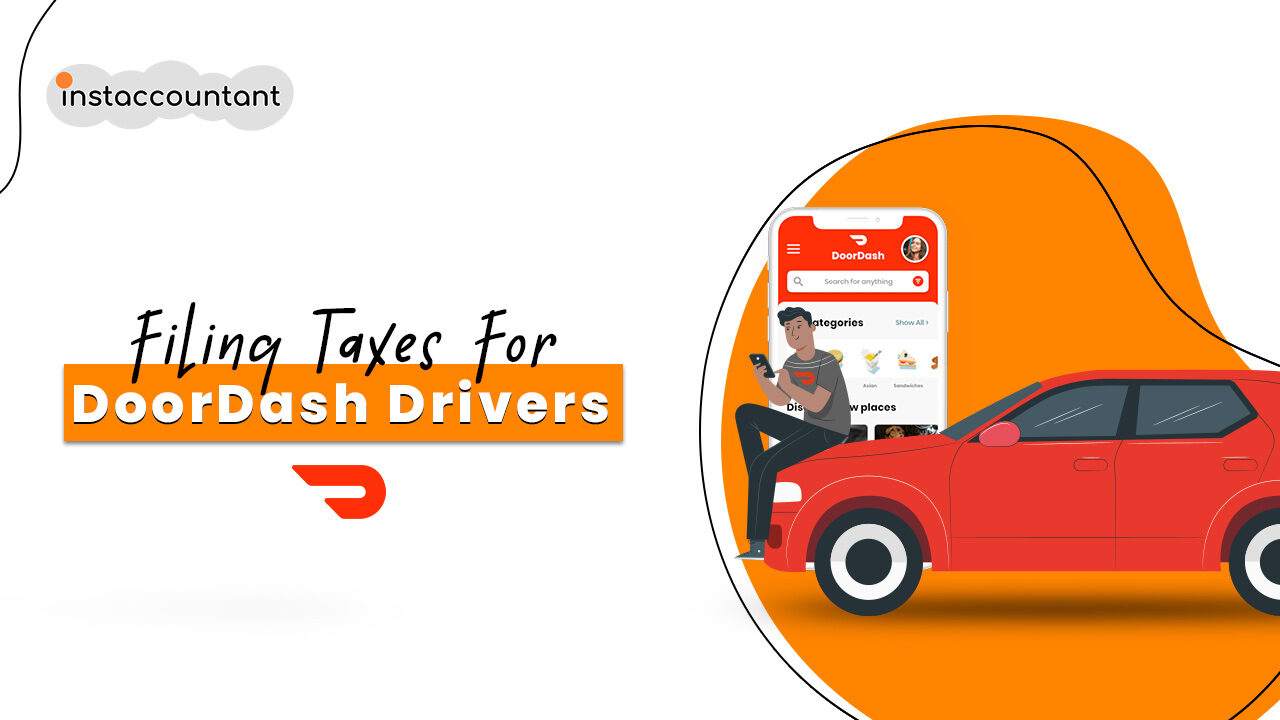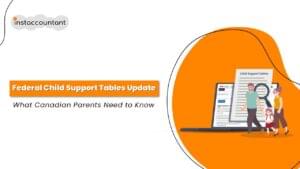Filing taxes as a Doordash driver can be tricky, and it’s easy to feel like you’re stuck in a maze of paperwork and deadlines. But don’t worry, delivery heroes! We’re here to help you with this guide to Doordash taxes, including the forms you need, deductions you can claim, and tips to save money and stay on the right side of the CRA. Let’s make taxes as easy as a delivery route!
DoorDash Taxes and Income Reporting
First things first, as a Doordash delivery driver, you’re considered self-employed. It doesn’t matter if you do it full-time or part-time, or if you have another job as well. You are still self-employed for your Doordash income. This means you are responsible for reporting your income (including tips) and expenses to the CRA (Canada Revenue Agency). You won’t get a T4 slip from Doordash, which is what employees get from their employers. Instead, you’ll have to fill out a form called T2125 (Statement of Business or Professional Activities) and attach it to your personal tax return. The amount of tax that you have to pay depends on how much income you make from Doordash and other sources, and what tax bracket you fall into.
Another thing you need to know is that you have to pay your own taxes. Unlike employees, who have income tax deducted from their paycheques, self-employed people have to calculate and pay their taxes themselves. This can be a bit tricky, because you might not know how much you owe until the end of the year. To avoid a nasty surprise, I recommend that you save some money from each Doordash payment and put it in a separate account for taxes. You can also make instalment payments throughout the year, which are like prepayments of your taxes.
It’s worth noting that the calculation for Canada Pension Plan (CPP) contributions should also take into account both the employee and employer portions, which are based on your profit.
HST for DoorDash Drivers
Generally, you do not have to register for HST or file a HST return unless your income goes beyond $30,000 in a 12-month period. HST is a Canadian sales tax that is added to the price of most goods and services in Canada. If your income goes beyond $30,000, you need to register for HST and start charging HST on your delivery fees. You also need to file a HST return and remit the HST that you collect to the government. Keep this in mind and seek professional advice if you reach this threshold.
Tax Deductions for DoorDash Drivers
Do you want to pay less taxes as a DoorDash driver? Then you need to know what expenses you can deduct from your DoorDash income. Deductions lower your taxable income, which means you owe less DoorDash taxes. But you have to keep track of them and claim them correctly. Doordash Deductible expenses include:
1. Vehicle expenses while working DoorDash
One of the biggest deductions you can take as a DoorDash driver is your vehicle expenses. This method requires maintaining detailed records of all car expenses associated with business use, including:
- Gas receipts
- Insurance payments
- Maintenance and repair bills
- Lease payments (if applicable)
- Interest on a loan used to purchase the vehicle (partial amount)
Remember, you can only deduct the percentage of expenses directly related to Doordash deliveries. Maintaining a detailed mileage log is essential to accurately determine this business use proportion. For example, if you drove 15,000 miles in a year and 9,000 miles were for business, then your business use percentage is 60% (9k/15k = 0.6). You also need to know the purchase price of your vehicle when you started using it for business. This will be the basis for your depreciation expense calculation.
2. A portion of your cell phone expenses
Another deduction you can take as a DoorDash driver is your phone and accessories. Your phone is your lifeline as a Dasher. You need it to accept orders, navigate directions, communicate with customers, etc. That means you can deduct a portion of your phone bill, data charges, and any accessories you use for work, such as a car charger, a phone mount, or a headset.
The key here is you need to keep track of how much you use your phone for business and personal purposes, and only claim the business portion. For example, if you use your phone 40% for work and 60% for personal use, you can only deduct 40% of your phone bill and data charges. You also need to keep your receipts for any accessories you buy.
3. Supplies and equipment
Another deduction you can claim as a DoorDash driver is your equipment. Anything that helps you keep your deliveries fresh and happy counts as a business expense. For example, hot bags, insulated blankets, coolers, etc. These items are tax-deductible as long as they are strictly work-related.
To claim these deductions for taxes, you need to keep your receipts and records of when and how you use them for work. You also need to make sure they are reasonable and necessary for your business.
4. Parking
If you have to pay for parking while dashing, those fees are tax-deductible too. Parking fees are considered a business expense as long as they are related to your work. To claim these deductions, you need to keep your receipts and records of when and where you parked and why it was related to your work.
5. Other expenses
You can deduct any other reasonable expenses that are related to your Doordash business, such as accounting fees, bank fees, licenses, memberships, etc. To claim these expenses, you need to keep all your receipts and records for at least six years in case the Canada Revenue Agency (CRA) asks for them.
How to Track Expenses for DoorDash Driver
One of the most important things you need to do is to keep accurate records of your expenses. This will help you maximize your tax savings and avoid trouble with the CRA. A great way to do that is to use a receipt scanner and expense tracking app like Zoombooks. Zoombooks app (built by accountants) lets you easily track and organize your expenses. You can categorize them by type and separate your personal and business spending. You can also snap a picture of your receipts and upload them to the app. This way, you won’t lose any receipts or forget any deductions. Zoombooks also helps you review your records regularly and make sure nothing is missing.
How to Claim Your DoorDash Tax Deductions
When it’s time to file your DoorDash taxes, you need to claim all your eligible deductions on the correct CRA forms. For example, report your business mileage deduction on Form T2125, applying the standard mileage rate or your actual vehicle expenses, whichever is higher. It’s important to follow the CRA guidelines and use the right amounts and categories for your deductions. If you’re not sure how to do that, you should work with a tax professional. They can help you optimize your deduction strategies and save more money on your taxes.
After you file your taxes, don’t throw away your records. You need to keep them for at least 6 years in case the CRA audits you. If they do, you need to show them proof of your deductions. That’s why it’s important to have detailed documentation of your expenses. Your receipts, bank statements, invoices, mileage logs, and Zoombooks reports will all help validate your deductions.
Final Thoughts
Filing taxes as a self-employed delivery person can be stressful and time-consuming, but it doesn’t have to be. If you know what expenses are tax-deductible and how to track and claim them, you’ll make tax season much easier for yourself. Plus, you’ll save more money on your taxes too! Happy filing!
If you have any questions or comments, feel free to leave them below. And don’t forget to check out Zoombooks, the best app for tracking your deductions as a Delivery driver!





